
First of all, while we didn't just randomly draw names out of a hat, this certainly isn't anything close to a scientific conclusion boasting repeatable, measurable results. What we did was ask a group of alumni and a group of wsu faculty and staff to tell us who have impressed them the most as Shockers — in other words, to list those alumni, faculty and staff who, in their opinions, have made the greatest impact on our world and our university and its students. Then we counted the votes and ranked the individuals.
Second, we know all too well that a Top 40 isn't anywhere near large enough a pool to provide a true picture of the depth and breadth of contributions made by the tens of thousands of Shockers who've passed through and enriched our institution of higher education. So why a countdown of 40? Why not 100? We offer no better explanation than this: If it's good enough for Kasey Kasem, it's good enough for us.
We also know without doubt that many Shockers — maybe even you — will want to question us about our results. So do! We actually want to hear your complaints about not finding a special Shocker in our countdown. That way, we can learn even more about the accomplishments of wsu alumni, faculty and staff. But despite all the risks of not getting it right or complete or fair, sometimes you just have to take a deep breath and get on with it. So, with great pride and just a little trepidation, here's The Shocker's Top 40.
To start us on the way to the Shocker at No. 1, we salute these extraordinary people, each of whom garnered enough votes to deserve an honorable mention: Robert Peak fs '49 (1927-92), illustrator often considered the father of modern movie posters; Roberto Cruz '64, president of the National Hispanic University; Wilbur Elsea '50, creator of WuShock; Dan Foley '59, co-founder of Taco Tico; J. "Jumpy" Geathers fs '84, football stand-out and longtime pro player; K.T. '36 (1912-96) and Mary '89 Woodman, a geologist and homemaker, respectively, both wsu supporters; Larry King '67, award-winning set designer; the 1970 wsu football team; Jerry Florence '71, corporate executive, Roger Lowe, wsu vice president of administration and finance; Xavier McDaniel '87, record-setting basketball player; Beulah Mullens, alumni association director; Marilyn Pauly '72, Kansas president of Bank of America; Don '59 and Lynn '64/92 Stephan, advertising pros and wsu supporters; David Urie '59, aeronautical engineer for Lockheed Martin; Geraldine Hammond '31, professor emeritus of English; Bill Wilhelm, longtime wsu engineering dean; Cliff Levingston fs '84, stellar basketball player; and Garner Shriver '34 (1912-98), former U.S. representative from Kansas.
 #40
#40
Oliver B. Elliott ’42 (1919-1996)
A former Sunflower editor, Elliott became chairman of the board and CEO of National-Spencer Inc., a national manufacturing and sales company. A highly successful businessman, he initiated or acquired 18 different small businesses. A community leader active in the Wichita Rotary Club, the chamber of commerce, music theatre and the Salvation Army, he also remained involved with his alma mater, giving generously of his time and money. He and his wife Betty endowed $7.6 million in 1988 to create the Elliott School of Communication.
 #39
#39
Howard W. Darling (1856-1937)
This pioneering lumberman - the owner and president of Arkansas Valley Lumber Co., Wichita, when the city was still in her teens - is one of the organizers of Fairmount College, a Congregational institution of higher learning. An important figure in Congregationalism in Kansas, Darling held one of the longest tenures on record as a member of the school's board of trustees, serving from 1894 to 1926, the year Fairmount, in large part because of his efforts, became the Municipal University of Wichita. He was serving as chairman of the board's building and grounds committee at the time of the 1907 groundbreaking for the Carnegie/Morrison Library.
 #38
#38
N. Henry Pronko (1908-1998)
Dr. Henry Pronko taught psychology to three decades of students at Wichita State, from 1947 to 1977. He loved to teach. "I had that ‘Let me at ‘em attitude'," he once explained. A professor emeritus of psychology, he was known as one of the world's leading proponents of interbehaviorism, a major school of thought in psychology which holds that behavior is not purely a function of the brain or genes but of interaction with the environment.
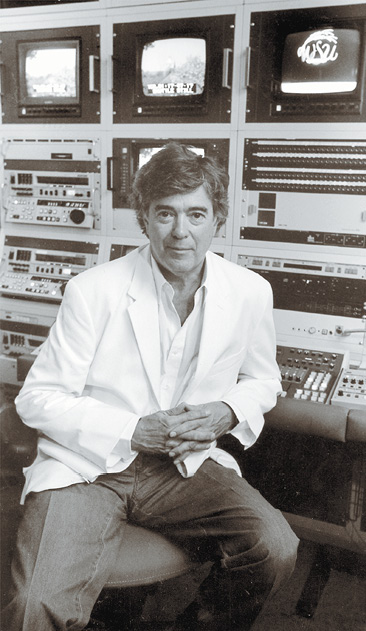
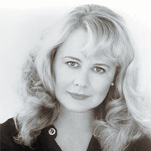
#37
M. Dean Hargrove ’60 and Shirley Knight fs ’57
The first of a number of "ties" in The Shocker's rankings, both of these alumni have found success in the highly competitive entertainment industry. Hargrove is one of the country's top television writer-producers. He is executive producer of the CBS series, "Diagnosis Murder," starring Dick Van Dyke. Other TV credits include "Columbo," "Matlock" and "Father Dowling Mysteries." One of his earliest gigs was a writing stint for the "Bob Newhart Show." Knight began her film career in 1960 with an Oscar-nominated performance in The Dark at the Top of the Stairs. Familiar on screen, stage and television, she's won both Emmy and Tony awards for her work and has been most recently featured in the CBS sitcom, "Maggie Winters," starring Faith Ford. (She's Maggie's mom.)
 #36
#36
Gerald H. Graham
This dean of the W. Frank Barton School of Business, respected researcher and noted business consultant has received numerous awards, including the WSU Regents Award for Excellence in Teaching. Dr. Graham, who has taught at the university for the past 32 years and served as dean since 1993, has made plans to step down from his administrative post - but not so he can retire. Instead, he looks forward to devoting more time to the profession he's loved the most over the years - teaching. As he told the Wichita Eagle, "I think it is one of the best careers someone could have."
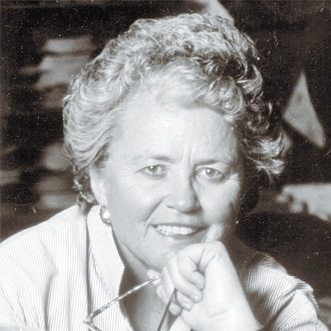 #35
#35
Judith M. "Judy" Bell ’61
Judy Bell was elected the first woman president of the United State Golf Association in 1996, becoming the organization's 54th president, but one of the very first women to lead a national sports organization of any kind. A player in 38 USGA championship, she was also in the 1950 U.S. Women's Open - at the age of 14. In the 1964 Women's Open, she shot a record score of 67 in the third round, a record that wasn't broken until 1978. Her lifelong commitment to golf is complemented with a savvy business sense that oversees several successful clothing stores and restaurants.
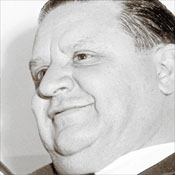
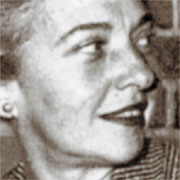
#34
Paul I. Wellman ’18 (1895-1966) and M. Kathleen Hite ’38 (d. 1989)
Both of these alumni found fame as prolific and respected writers, she as a free-lance scriptwriter for radio and television - think "Gunsmoke," "Alfred Hitchcock Presents," "The Waltons" and "Wagon Train" - and he as the author of 27 books, many of them best-sellers that were made into movies, Apache, starring Burt Lancaster, for example. Two of his books, Death on the Prairie and Death in the Desert, are recognized by critics as among the best accounts of the Indian wars of the West.
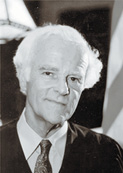 #33
#33
Hon. Patrick Kelly ’52
His fierce determination to uphold the law of the land has made this former U.S. District Court judge one of the most respected, and controversial, figures in Kansas judicial history. His tenure on the federal bench was marked by a handful of high-profile, far-reaching cases. In 1985, he reduced a jury's record $10 million punitive-damages award to the widower of a woman who died of toxic shock syndrome after using tampons. An appeals court later reversed the decision. Then in 1991, he relied on an 1871 law that forbids conspiracies against the exercise of constitutional rights as the basis for reigning in the activities of Operation Rescue, an anti-abortion group attempting to block access to abortion clinics in Wichita.
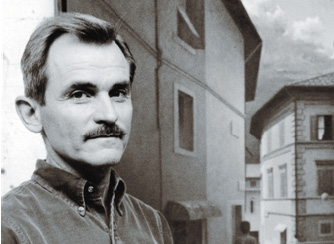
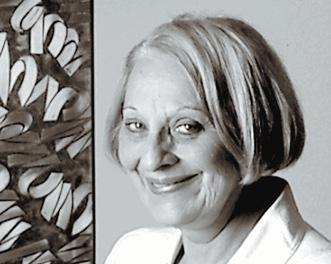
#32
Ron Christ and Mira Merriman
These WSU art faculty members - he, a professor of painting and drawing; she, an art historian and professor emeritus of the School of Art and Design - have earned far-flung respect for their scholastic and creative works. The focus of Christ's paintings has evolved through the years, but since 1991 his subjects reflect a fascination with the architectural and landscape elements of Italy. Two of his oil paintings were selected for "The International Biennial Exhibition of Contemporary Art: Florence Biennale 1999" in Florence, Italy. The focus of Merriman's work throughout her long and distinguished career as educator and scholar has been the ever-shifting patterns of mankind's artistic interpretations of reality. Considered one of the foremost authorities on the Bolognese Baroque artist Giuseppe Maria Crespi, she is also one of the most avid supporters of talented, WSU-educated artists.
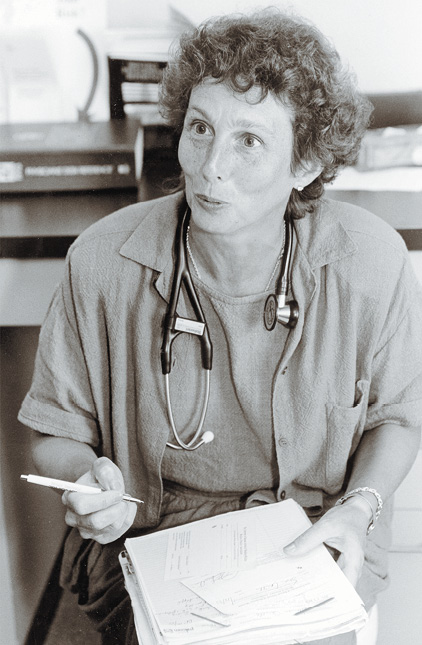 #31
#31
Dr. Donna E. Sweet ’70/72
Nearly 20 years after the word "AIDS" became a household word and, for millions of people worldwide, a hellish nightmare, WSU has reason to be proud of Dr. Sweet. The director of Internal Medicine Education at Via Christi Regional Medical Center and professor of medicine at the University of Kansas School of Medicine-Wichita, Sweet has been recognized nationally for her fight against one of the most feared pandemics of the 20th century. Among her many honors is receiving the "Award of Courage" from the American Foundation for AIDS Research on World AIDS Day 1992. One of her greatest contributions to the HIV/AIDS community is her willingness to treat HIV-infected individuals who do not have health coverage or the means to pay for treatment.
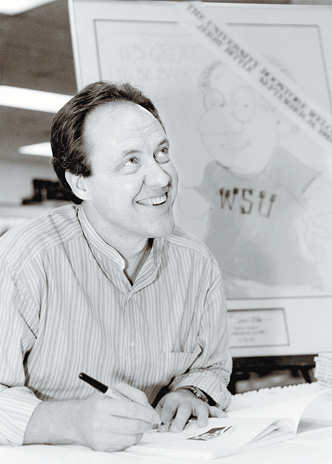
#30
Jerry Bittle fs ’73
The creator of GEECH, this artist launched what would become a nationally syndicated cartoon through Universal Press Syndicate in 1982. Bittle also wrote both the script and the lyrics for the award-winning "Geech: The Moosical," which premiered in Phoenix in 1988.
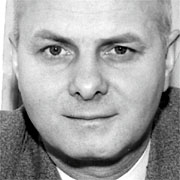 #29
#29
Walter Duerksen ’31/38 (1907-1980)
In large measure, it was Professor - and later - Dean Duerksen who conducted the grand crescendo that is the history of the university's nationally recognized school of music. Beginning his career in 1932 as a WU band director, this trombonist saw the music department grow from fostering 60 music majors the year he arrived, to more than 500 in 1972, the year he retired. In the larger community, he is lauded for helping develop the Wichita Symphony Orchestra and served on its board for 20 years.
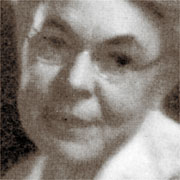
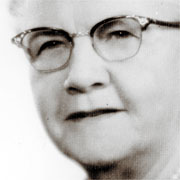
#28
Elizabeth Sprague and Grace Wilkie (d. 1967)
Recruited by President Nathan Morrison in the earliest days of Fairmount College, Elizabeth Sprague, an artist, invented the school colors, "sunflower" yellow and black. She designed the first Fairmount seal. And she taught art through the Fairmount years into the school's second incarnation, the Municipal University of Wichita. At the time of her retirement in 1933, she recalled first coming to campus: "How uninviting were the surroundings, how barren and incomplete! But the meadowlark sang blithely as he did in the cold winter days, (and) Dr. Morrison told me cheerily, ‘It is good to be a pioneer - how it warms the blood and tries the patience'." In 1912, when Grace Wilkie arrived at the school she would serve for 41 years - first as head of the home economics department and then as dean of women - Fairmount boasted an enrollment of 300. With her warm personality and reasoned advice, Wilkie was to guide many times that number of students through the course of her career. As a Wichita Beacon reporter wrote on the occasion of her retirement in 1953: "She guided coeds from the days of the flapper, through the sheba (whatever that was!) and into the days of the hep cat."
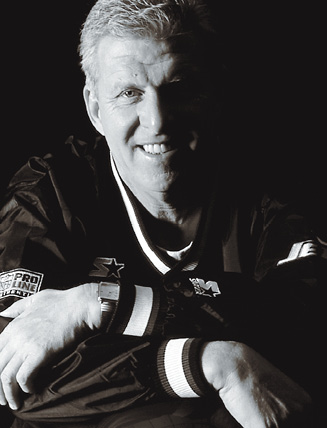 #27
#27
Bill Parcells ’64
One of the most successful professional football coaches ever, Bill Parcells has already coached two football franchises into the Super Bowl (the New England Patriots and the New York Giants), has won two Super Bowl rings (both with the Giants) and is a clear favorite, with his current team, the New York Jets, to return to the big game in future seasons. Even with his frenetic schedule, he still takes some time to contribute to alumni events, including making donations to the annual Shocker Auction.
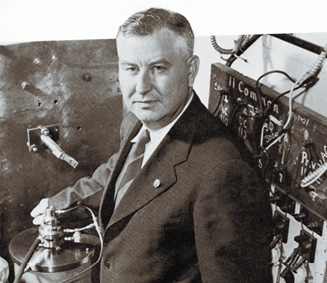 #26
#26
Jesse W. Beams ’21 (d. 1977)
A recognized authority on high-speed centrifuges, this physicist was the first to use the device to separate isotopes of chlorine. In 1939 he was appointed by President Franklin D. Roosevelt to serve on the "Uranium Committee," which was organized to explore the possibilities of producing an atomic bomb from U-235. From this committee emerged the Manhattan Project, the World-War-II effort to build an atomic bomb.
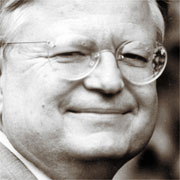 #25
#25
Robert Blackwill ’62/62
A career diplomat from 1967, Blackwill teaches foreign and defense policy, political and organizational analysis, and public management at Harvard University's John F. Kennedy School of Government. He is the author of many articles on European security and East-West relations. During his foreign service career, he served as director of West European affairs on the National Security Council staff; principal deputy assistant secretary of state for political-military affairs; principal deputy assistant secretary of state for European affairs; and U.S. ambassador and chief negotiator at the negotiations with the Warsaw Pact on conventional forces in Europe. He was special assistant to President George Bush for European and Soviet affairs 1989-90, and in December 1990, he was awarded the Commander's Cross of the Order of Merit by the Federal Republic of Germany for his contribution while at the White House to German unification.
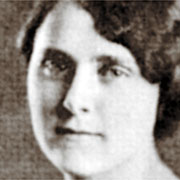 #24
#24
A. Kathleen Walsh ’28/39
One of this English teacher's most endearing qualities is her dedication to education. During her career, she served as chair of the board of directors of the Kansas State Teachers' Association - one of only two women to hold that position. With her father as co-author, she wrote The Plain English Handbook, which became a best-selling English handbook. An inductee into the Kansas Teachers' Hall of Fame, Walsh also helped fight two bitter campaigns to make Fairmount College a municipal university, a fight that helped many others receive a college education.
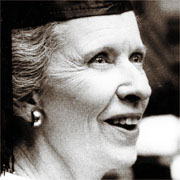 #23
#23
Kathlien Edmiston ’33 (1911-1998)
A community leader and university spokesperson, she was the first Shocker graduate to be named to the school's board of regents - and the first woman to be elected chairman of the board. Politically active, she was once described by her daughter this way: "My mother was so Republican she would never buy the stamps that had FDR's face on them." A woman of action, she is remembered for single-handedly saving the remaining pillars of the Morrison Library, which burned in 1963. Edmiston sat on one of the pillars in front of a bulldozer sent to remove the debris. Three pillars now stand at the university's 17th Street entrance, a lasting tribute not only to WSU's past but also to her foresight and dedication.


#22
Dr. Hazel Branch and Dr. D. Cramer Reed ’37
Dr. Branch, who had earned two degrees from the University of Kansas and a medical doctor's degree from Cornell, was appointed professor of biology in 1922, giving up her plan to practice medicine for teaching prospective doctors. Among her contributions was the introduction of an approved premedic course; another, indeed her greatest, was inspiring her students, among them Vincent Gott and Cramer Reed. Reed, a board-certified urologist and advocate for preventative medicine, has been the organizing force behind WSU's College of Health Related Professions, for which he served as first dean; the University of Kansas Medical School-Wichita; and Wesley Medical Center's Health Strategies, a health promotion program.
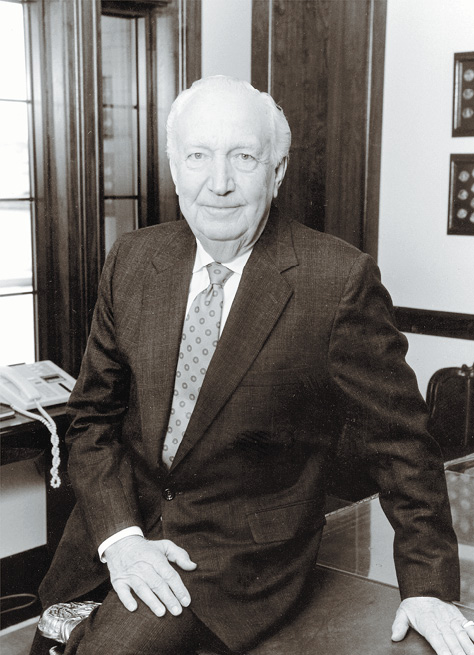
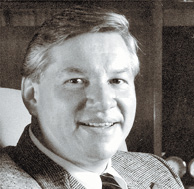
#21
Frank Barton, Tom Devlin fs ’70
These famed entrepreneurs founded Rent-A-Center in 1973, selling the company 14 years later for a whopping $594 million. The namesakes of Devlin Hall, which houses WSU's nationally acclaimed Center for Entrepreneurship, and the W. Frank Barton School of Business, these two Shockers are masters of the business deal.
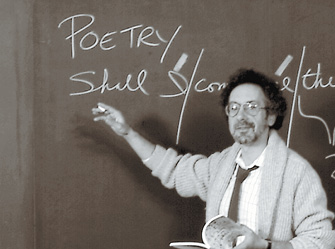
#20
Albert Goldbarth
This Adele Davis Distinguished Professor of Humanities is the author of nearly 30 collections of poetry and three volumes of essays. His work consistently appears in literary journals across the U.S. and Canada, and has won numerous prizes including the 1992 national Book Critics Circle Award for his collection Heaven and Earth: A Cosmology. Reviewers and critics have commented en masse on his brilliant diction and imaginative reach. In addition to writing, his tireless work schedule frequently sees him guesting as faculty at universities across the country as both reader and visiting writer. His industry and the scope and eloquence of his work are likely to ensure his place in literary history.
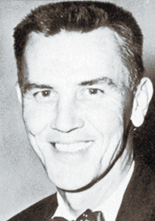
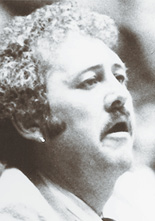
#19
Ralph Miller ’38 and Gene Smithson
The net result of the efforts of Shocker coaches, past and present, is a basketball heritage second to none. Standing with Leonard Umnus and Gene Johnson as legendary coaches are these two hard-driving, sometimes-troublesome men: Miller and Smithson. Known for his rough talking and tough coaching, Miller is credited with first putting Shocker basketball on the map. As head coach from 1951-64, he posted the most wins in Shocker history (220). Smithson, surely WSU's most flamboyant coach, coached from 1978-86, winning 155 games. Only Miller won more. Under his tutelage, players such as Antoine Carr, Cliff Levingston, Aubrey Sherrod and Xavier McDaniel vaulted Shocker basketball into the highest realms, defeating Kansas in the Midwest Regional finals in New Orleans in 1981 and reaching a brief, but real, one-week stay at No. 1 in the polls in 1982.
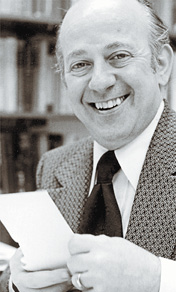 #18
#18
Fran Jabara
The name of Fran Jabara - the former accounting professor, dean of the College of Business Administration and Distinguished Professor in Business who founded WSU's Center for Entrepreneurship in 1977 - has become nearly synonymous with the word business. A list of his friends and former students reads like a who's who of Wichita business talent. To mention only a few, Larry Jones ‘53, the Carney brothers, Barton, Devlin and Dan Foley ‘59 are all WSU-connected businessmen who built empires that became national household words: the Coleman Company, Pizza Hut, Rent-A-Center and Taco Tico.
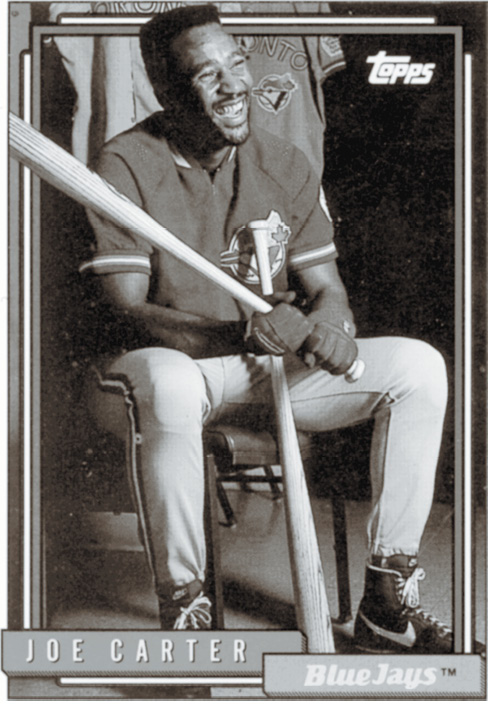
#17
Joe Carter fs ’81
A Missouri Valley Conference Hall of Fame inductee for his stellar Shocker baseball career (1979-81), Carter went on to slam his way into Big League immortality in the 1993 World Series when he powered a game-winning, three-run homer to make the Toronto Blue Jays back-to-back World Series champs. He retired from pro ball in 1998.
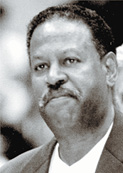
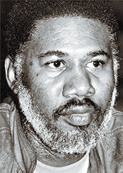
#16
Cleo Littleton ’55 and Dave Stallworth fs ’65
Both of these basketball legends are charter inductees in the Pizza Hut Shocker Sports Hall of Fame, and they both are among the first Shocker athletes to have their numbers retired, 13 and 42, respectively. Cleo Littleton, who wore Shocker colors from 1951-55, still holds the school record for most points scored in a career, 2,164. Most notably, he paved the way for minority athletes at WU. Dave "The Rave" Stallworth, who played from 1962-65, led the Shockers to NCAA Tournament appearances in the 1963-64 and 1964-65 seasons. He holds nine school records, including highest career scoring average, with 24.2 points per game. He went on to nearly a decade of pro basketball with the New York Knicks and the Baltimore Bullets.
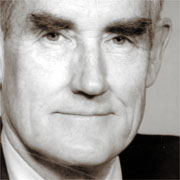 #15
#15
Dr. Vincent L. Gott ’51
A member of the trio that developed the artificial heart unit, better known as the pacemaker, this surgeon, now a professor of surgery at Johns Hopkins Hospital, has dedicated his professional life to research aimed at repairing the sometimes faltering human heart.
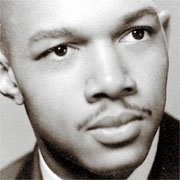 #14
#14
Linwood B. Sexton ’48
Now an area sales manager at Hiland/Steffen Dairy Foods, this incomparable Shocker played football for the University of Wichita in the late 1940s, when young black men weren‘t allowed to stay in the same hotel or eat in the same restaurant as the rest of the team. Active in civic affairs, he is an eloquent and effective spokesman for civil rights. As he wrote in 1990, "Education is the key to minority progress in America. Freeing the mind is the first and most important step toward social and economic freedom."
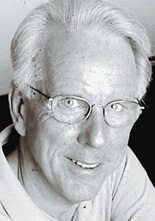
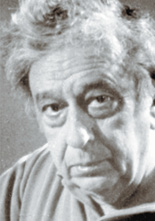
#13
George Gibson and Dick Welsbacher
These two talented fine arts faculty members, now both "retired" from teaching, have been the voice and the emotive face of WSU for more than 30 years, each of them credited with enriching the cultural life of the university - and beyond. Gibson, a gifted voice instructor who served as director of opera theatre from 1967-97, is recognized for his powerfully expressive bass baritone voice, for his passion for teaching and his deep love of music. He hit all the right notes with colleagues and students as well, many of whom credit much of their success to his teaching. Welsbacher, a consummate actor, served for 30 years as director of theatre. While the plays he directed and the roles he played changed through the years, he remained focused on his favorite topic: the students. He continues to direct and act and this fall directed a play written by his daughter Anne.
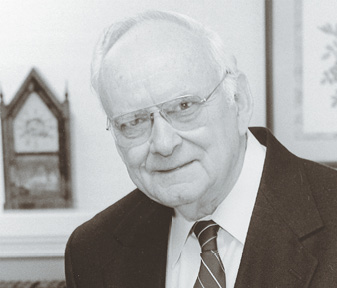 #12
#12
John B. Breazeale
Like any good scientist, this veteran professor is part explorer, part pioneer. During his three decades at WSU, he served as graduate school dean, executive vice president for academic affairs and as the first director of the National Institute of Aviation Research. He joined the WSU faculty in 1959 as associate professor of physics. Now retired, he holds the most emeriti titles of any other living faculty member.
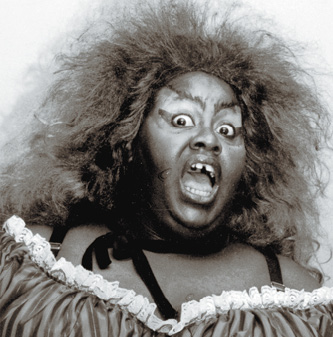 #11
#11
Karla Burns ’81
Burns made her New York City Metropolitan Opera debut in "Porgy and Bess" and was nominated for a Tony award for her portrayal of Queenie in the 1982-83 Broadway revival of "Show Boat." This dynamic performer is the recipient of numerous awards, including a Drama Desk Award and the 1991 Lawrence Olivier Award for Best Supporting Performer in a Musical. Not bad for a woman someone once advised to "be a biologist or something."
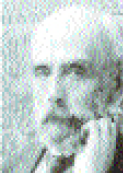 #10
#10
Nathan J. Morrison
A preacher and a professor, Nathan Morrison is the first president of Fairmount College, serving from the Congregational school's beginning in 1895 until 1907. Sixty-seven years old, in semi-retirement and teaching philosophy at Marietta College in Ohio when recruited, Morrison accepted the presidency on Aug. 1, 1895. It was not his first. The former pastor of the Congregational church in Rochester, Mich., had already earned a reputation as a college builder. He was the driving force behind the development of both Olivet College in Michigan and Drury College in Springfield, Mo., and served both colleges as president. At Fairmount, he proved himself to be a person of unwavering dedication, driven by missionary faith, love of young people and a deep belief in the benefits of education. Perhaps his most personally rewarding accomplishment was the planning of a library to house the collection of books it was his passion to build. Sadly, only hours after the 1907 groundbreaking ceremony for the Carnegie/Morrison Library, President Morrison died. His legacy, however, continues.
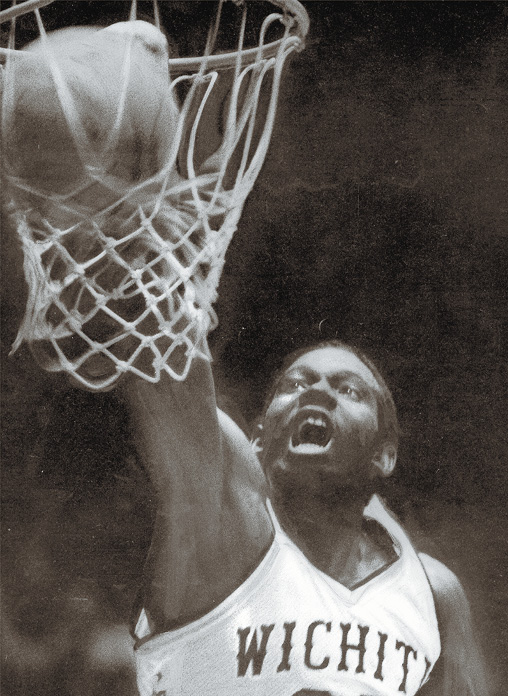 #9
#9
Antoine Carr fs ’83
Inducted into the Missouri Valley Conference Hall of Fame in 1999, Antoine Carr helped bring his hometown university back to national basketball prominence in the early 1980s, teaming with Cliff Levingston to form the powerful "Bookend Forwards" combination that dazzled opponents and fans alike. A first-round draft choice of the Detroit Pistons in 1983, Carr went on to play in two NBA championships, 1997 and 1998, with the Utah Jazz. He has also played with the San Antonio Spurs and the Houston Rockets.
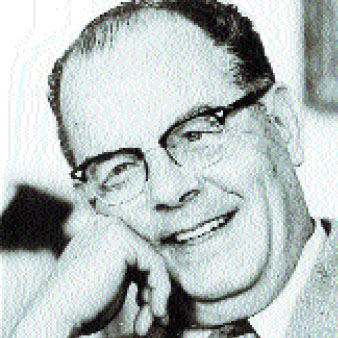
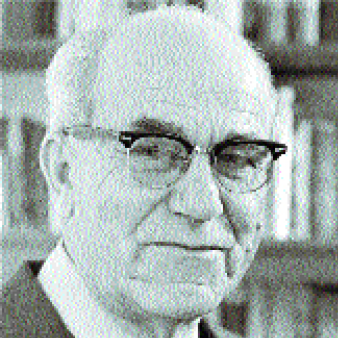
#8
Clark Ahlberg ’39 and Emory K. Lindquist (1908-1992)
A commitment to academic quality is one legacy these two university presidents share. Ahlberg, the university's ninth president (1968-83), oversaw substantial growth in academic programs and enrollment as well as in the physical development of the campus. To cite one example, he established the College of Health Professions in 1970. The building that houses the college bears his name. Lindquist - the university's eighth president, WU's fifth and Wichita State's first - is surely WSU's only professor ever knighted for contributions to Kansas education by the king of Sweden. A native of Lindsborg, Kan., Lindquist is the author of a number of books on Swedish immigrants and Kansas history. During his presidency (1963-1968), this internationally renowned scholar, writer and educator guided Wichita State through an exciting - but often exhausting - transition period from municipal to state university. WSU enrollment skyrocketed as tuition prices fell, and, while the faculty took on larger classes and the staff doubled up on duties, Lindquist fought for budget increases to match the boom.
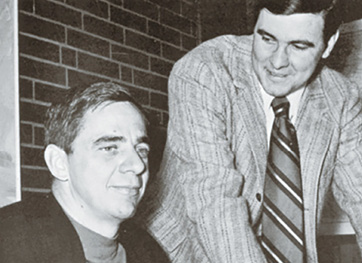
#7
Dan Carney ’53 and Frank Carney fs ’60
The public's fascination with the Carney brothers is founded on one of the most famous entrepreneurial Cinderella stories ever told and re-told. The plot's skeleton is as familiar to native Wichitans as the name Pizza Hut has become to pizza lovers the world over. The setting: Wichita, 1958. Main characters: Dan, 27, and Frank, 19, both students at the University of Wichita. The action: pioneering a worldwide distribution system of Pizza Hut restaurant franchises. Happy ending: by 1977, the number one pizza restaurant chain in the world in both sales and number of restaurants; that same year, PepsiCo purchased the corporation for $300 million.
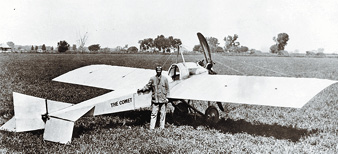
#6
Dwane L. Wallace ’33 (1911-1989)
This aviation pioneer launched the reorganized Cessna company in 1934 by designing and manufacturing the C-34, a classic mono-plane that became world renowned as the Cessna Airmaster. He went on to serve as the chairman of Cessna Aircraft Co. from 1936 to 1975. Marketing, for the first time in history, small single-engine planes as tools for businessmen, he led Cessna to the preeminent position it now holds in the industry.
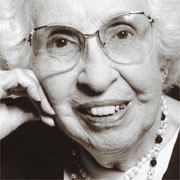 #5
#5
Laura (McMullen) Cross ’25 (1903-98)
Commemorated as the "Grande Dame of Fairmount Hill" in WSU's Plaza of Heroines, this irrepressible Shocker personality threw the force of her energies behind the mission of higher education with more than 70 years of service to her alma mater. From 1926 on, she worked at the university, first as a recorder of grades, then rising through the ranks to become assistant registrar in 1940, to associate director of admissions in 1965, to acting dean of admissions in 1970.
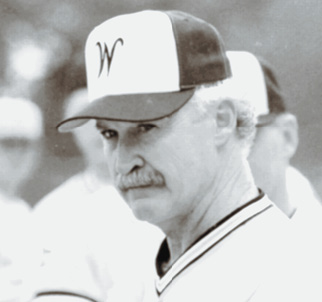 #4
#4
G. E. "Gene" Stephenson
His story is classic rags-to-riches, the baseball version. In 1977, the year this Oklahoma native arrived at Wichita State, the university had no baseball program. It had been disbanded after the 1970 season. There was no baseball field, no equipment. And no one gave the new coach much of a chance to build a team or a program, much less to mold a Shocker baseball tradition. But that's what he did. WSU‘s program is undeniably one of the best and most recognizable in the country, and Stephenson is respected as one of the top coaches in the game. In 1989, he led WSU to the pinnacle of college baseball with a College World Series championship. This year, he is the force behind construction of a revamped Eck Stadium Home of Tyler Field, a renovation that will make WSU's stadium one of the nation's premier places to play - and watch - baseball.
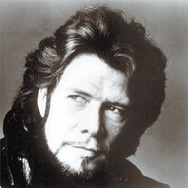 #3
#3
Samuel E. Ramey ’68
The most recorded operatic bass in history, this WSU graduate has gained superstar status and won international acclaim awarded only two other basses in this century: Feodor Chaliapin and Ezio Pinza. The recipient of such varied awards as his home state's Kansan of the Year honor and Italy's Franco Abbiati prize, that nation's most prestigious award, Sam Ramey can be heard regularly on the stages of the world's great opera houses: the Met, La Scala, Covent Garden, the Vienna Opera, the Paris Opera, among others. His spectacular career has enriched the cultural life of the U.S. and, indeed, the world. While he certainly will be remembered for the unique expressiveness and versatility of his bass voice, he also will be remembered for his commitment to and support of the fine arts and higher education, such as the opera fellowship he has established at Wichita State.
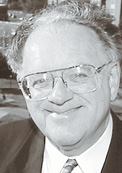 #2
#2
James J. Rhatigan
Dr. James J. Rhatigan once penned his thoughts about alma mater, "fostering mother," writing: "Alma mater is an anthropomorphic reference to higher education in which its creator apparently sensed and identified a phenomenon I feel is of profound importance. It implies a relationship between student and institution that is of inestimable value - deep and abiding." After 34 years at Wichita State, the wit of this "fostering father" flashes as brilliantly and his compassion runs as deeply as they did the day in 1965 he strode onto campus as the university's first dean of students. He went on to become vice president for student affairs in 1971 and professor of education in 1982. He now serves WSU as senior vice president. Through the years, this much-published, much-lauded student-affairs administrator has fostered literally thousands of relationships between students and their university, relationships that have proven to be of inestimable value, deep and abiding.
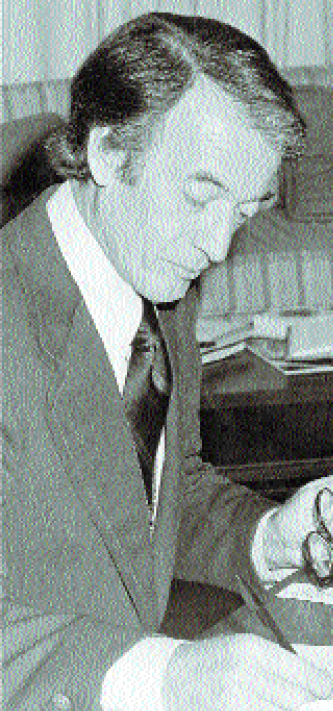 #1
#1
Harry F. Corbin ’40 (1917-90)
Despite working in the glare of the public spotlight for much of his shining career, this scholar, educator and administrator - who is credited with changing the face of not only the university, but of Wichita and the state of Kansas as well - ultimately desired refuge from public notice. The president of the Municipal University of Wichita from 1949 to 1963, Harry Finch Corbin led the fight to bring WU into the state system of higher education, against all the odds and against some of the most powerful political figures in Kansas. He proved himself to be not only a charming, urbane university professor, but one of the most skillful tacticians and political infighters Kansas had ever seen. On March 27, 1963, the Kansas Legislature approved WU's entrance into the state system. In a gesture designed so that any wounds he had created during the state fight would not hurt the university, he quietly resigned as its president on May 17, 1963 - three days after Wichitans, in an overwhelming 30,980 to 1,051 margin, voted to approve the legislative plan that created Wichita State University. Just as quietly, the scholar of world religions, philosophy and political science retired from teaching in 1987, asking that no announcement be made. Often described as modest, quiet and exceedingly dignified, Corbin was not one to tout his own accomplishments. He opted, instead, to laud achievements built on the collective efforts of many people. He would not have approved of being singled out and hyperbolically acclaimed The Shocker's No. 1 "Shocker of the Millennium." But he would surely have smiled to see this listing - however incomplete - of the disparate array of accomplishments, both personal and collective, of individuals who have immeasurably enriched the history of Wichita State University.
One of Corbin's most strongly held beliefs was in the strength and staying power of institutions of higher education.
One of his favorite poems was "The University" by John Masefield:
Century after century the University will continue,
And the streams of life will pass through it,
And the thinker and the seeker
Will be bound together
In the undying cause
Of bringing thought into the world.
To be a member of one of those great societies
must ever be a glad distinction.
Harry F. Corbin Chronicle of Achievements
• During his college years, he was nationally ranked as a member of the tennis team.
• Ran an oil brokerage firm at the age of 21.
• Earned an undergraduate degree in political science from WU in 1940, going on to earn a bachelor of divinity degree from the University of Chicago; ordained in the Christian Church and serving active duty in 1943 as a lieutenant in the Navy's Chaplain Corps. After leaving the service and then joining WU's faculty as assistant professor of philosophy and political science in 1946, he received a law degree from the University of Kansas in 1949 and a doctorate in philosophy from the University of Chicago in 1973.
• At the age of 32, he became the youngest WU president.
• During his 14-year tenure as president, the student body nearly doubled in size, from 3,300 to almost 6,000.
• The faculty grew from 191 to 294.
• Graduate students increased from 197 to 754.
• The number of volumes in the library doubled, with appropriations for books nearly 10 times what they had been.
• The university's budget almost quadrupled, and faculty salaries were improved.
• Fourteen major building projects were planned or completed, including the construction of the first "roundhouse" in the nation, Henry Levitt Arena, and of the $1 million Frank Lloyd Wright education building Corbin and Jackson Powell, chairman of the education department, had encouraged the architect to design.
• Corbin and Athletic Director Norvall Neave hired Ralph Miller to build a basketball program; the program became a dynasty.
• He brought educational television to Wichita, personally producing the first 13 programs, "Ideas in Action."
• He established the Urban Research Center to study community problems and solutions, and more closely tied the university to the community, making it a community resource.
• While the effort to bring the university into the state system was staffed by many volunteers, Corbin was the point man, leading those who spoke to any group anywhere in the state. In 1962, he told a student rally, "You are as much entitled to higher education opportunities at prices you can afford as those in other areas of Kansas. State merger is obtainable. It is going to be done." It was done.
• In 1979, he was inducted into the Pizza Hut Shocker Sports Hall of Fame, one of only a handful of administrators to be so honored.
• Known as an eloquent and thoughtful public speaker, Corbin talked frequently about the vision of the urban university and made his comments rich with wisdom gathered from many historical sources, among them Milton, Confucius, Robert Frost, Byron, Santayana, Benjamin Franklin, Albert Schweitzer, Goethe, Martin Luther and his favorite, Emily Dickinson.
• Corbin had the "glad distinction" of having a 45-year association with the university as a student, teacher and administrator. In reality, however, no finite limit of years can be set for this incomparable man's relationship with WSU.





